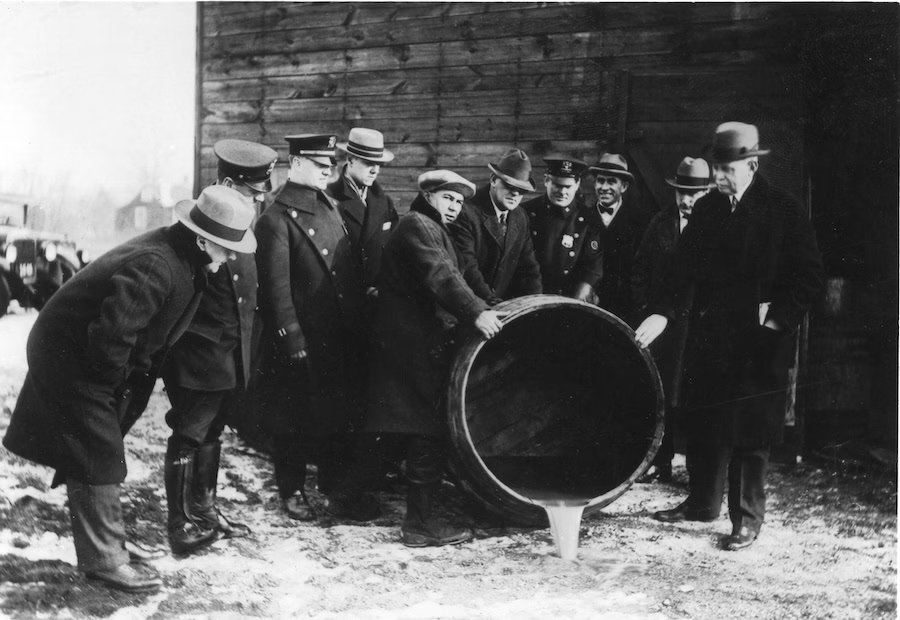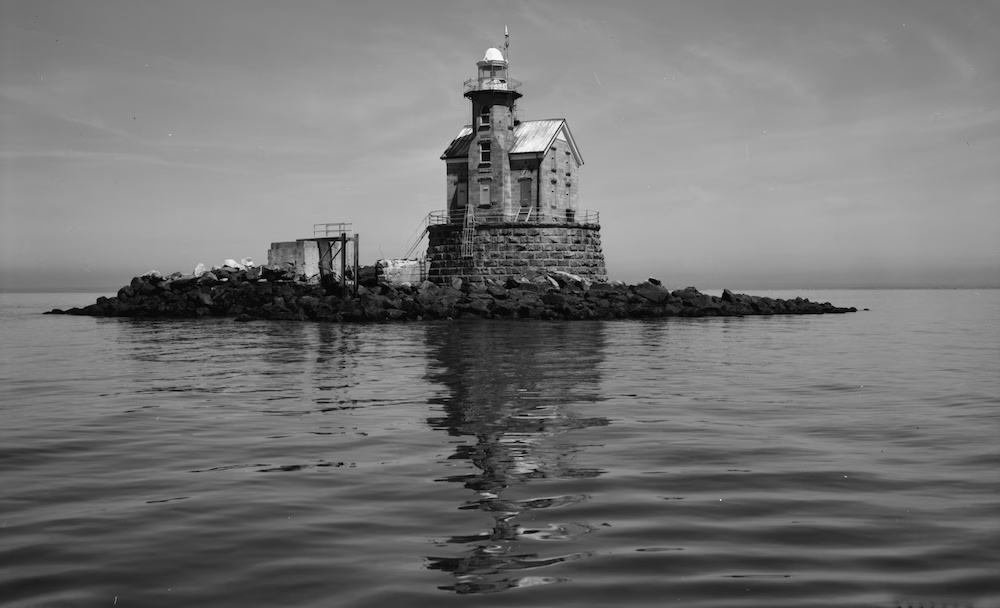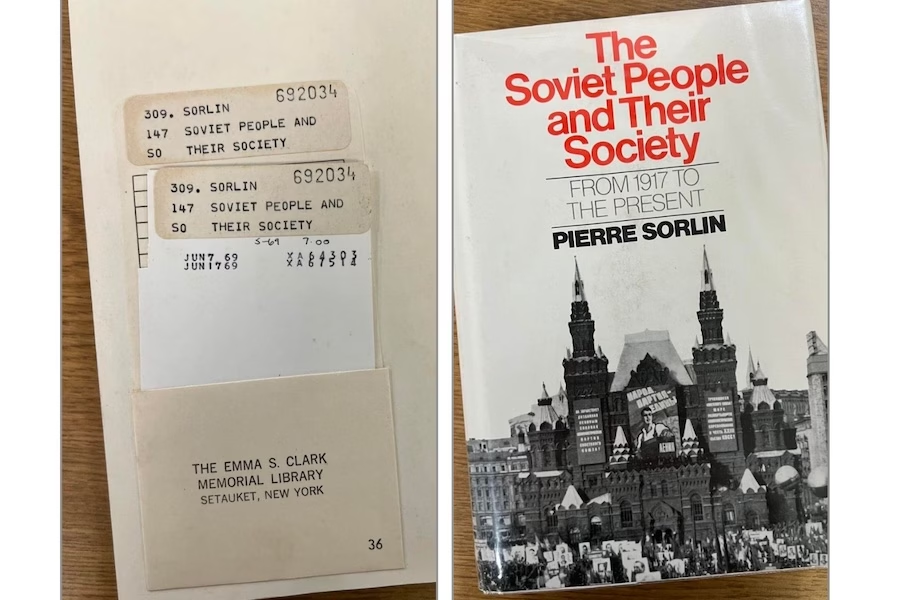This story about Long Island’s wild Prohibition days is brought to you by Artemis, a cocktail bar in Ronkonkoma that pays homage to the era of speakeasies and rumrunners. Named after the infamous rumrunning vessel that once eluded capture along Long Island’s shores, Artemis brings the spirit of the 1920s into a modern, luxurious setting. Located in Station Yards, Artemis offers an intimate escape where artisan cocktails are crafted to perfection, and light bites are served in an ambiance reminiscent of the Prohibition era. Whether you’re enjoying a memorable date night or a night out with friends, Artemis is where history meets modernity in a toast to cocktails and conversation. Visit Artemis at 3 Hawkins Avenue, Unit 1110, Ronkonkoma, or explore more at artemisspeakeasy.com.
For 13 years, from 1920 to 1933, the United States entered the Prohibition Era. The 18th Amendment promised a “bone-dry” society devoid of alcohol, heralding an age of health, morality, and sobriety. Spoiler alert: it didn’t go as planned. Instead, the era saw a rise in smuggling, speakeasies, and a new generation of cocktail culture.
Long Island’s proximity to New York City and its sprawling shorelines made it a hotspot for illicit activity, from rum running to secret speakeasies. Here are some incredible facts about Long Island during Prohibition that highlight its colorful and often chaotic role in this notorious chapter of American history.
The 18th Amendment and Rising Crime
- The 18th Amendment was ratified on January 16, 1919, and Prohibition officially began in 1920 with the National Prohibition Act, also known as the Volstead Act.
- Speakeasies flourished, and Long Island became a hub for illegal alcohol sales and production.
- Organized crime surged, as bootlegging and smuggling became lucrative enterprises.
- “Malt shops,” which legally sold alcohol-making ingredients, thrived despite brewing and distilling remaining illegal. Harold Schackman’s malt shop in Patchogue was so successful that he opened another in Riverhead before federal agents raided his operation in 1933.
- Suffolk County District Attorney Alexander Blue noted that liquor smuggling along Suffolk’s shores “kept New York City wet.”
- Creative disguises, like newspaper and bakery delivery trucks, helped smuggle booze to New York City.
- Long Island farmers and fishermen made up to $150 for storing illegal liquor in barns, contributing to nearly a third of Manhattan’s illicit alcohol supply.
- Surprisingly, the Ku Klux Klan joined law enforcement efforts to enforce Prohibition, often acting without official authority.
Speakeasies: Hidden Hubs of Prohibition
- Long Island’s speakeasies were legendary. Famous performer “Texas” Guinan operated a speakeasy in Valley Stream, drawing large crowds despite the risks.
- Police raided Port Washington’s Cove Inn in 1923, confiscating a staggering amount of alcohol.
- Claudio’s in Greenport used hidden trap doors to smuggle liquor into its bar—a feature still present today.
- The J.J. Sullivan Hotel in Riverhead (now Tweed’s) also served illegal drinks, utilizing trap doors to pass alcohol to a nearby bakery. Members of Tammany Hall were frequent patrons.
- Other speakeasy hotspots included Canoe Place Inn in Hampton Bays, Savage’s Hotel in Zachs Bay, and the Sea Breeze Inn in Wantagh.
- Port Jefferson had its share of illegal watering holes, including Barker’s Hotel and Bennett’s Restaurant. William Thompson, a local business owner, was twice fined for selling whiskey to veterans.
- In Freeport alone, 15 speakeasies were identified by a Brooklyn Daily Eagle reporter in 1929, including the infamous 300 Club, the site of a double homicide in 1926.
Rum Runners and Bootlegging
- With over 1,600 miles of shoreline, Long Island became a rum-running paradise.
- Local baymen’s knowledge of waterways made them indispensable to the smuggling trade.
- Captain Bill McCoy, a rum-running pioneer, anchored a schooner off Long Island’s coast in 1921, inspiring a fleet of smugglers known as Rum Row.
- Freeport Point Shipyard built boats for both the Coast Guard and rum runners, blurring the lines between law enforcement and crime.
- Gangster Dutch Schultz purchased three rum-running vessels from Freeport Point Shipyard.
- Long Beach officials allegedly used the city’s clock tower to signal bootleggers when it was safe to offload cargo.
- The W.T. Bell, a lumber schooner turned rum runner, ran aground near Bayville in 1927 with $500,000 worth of scotch and whiskey. Before authorities arrived, locals looted the stash, and the ship was later dynamited by the Coast Guard.
- The tugboat Lizzie D sank in 1922 while smuggling liquor. Divers who explored the wreck in later years recovered bottles of whiskey.
- Bay houses were strategically used to stash booze overnight before distributing it inland.
Crazy Facts About The Artemis
- The Artemis story runs deep in Long Island’s history. The original vessel, built for speed with three twelve-cylinder Liberty engines, ferried spirits from Rum Row during Prohibition.
- In 1931, the Artemis, a notorious rum runner, rammed a Coast Guard boat near Orient Point and later underwent repairs in Port Jefferson after being riddled with machine-gun bullets.
- After Repeal, the ship was repurposed as a ferry serving Fire Island, a fitting nod to the modern-day ties of Artemis the restaurant’s founders.
Prohibition’s Legacy
While Prohibition ultimately failed, its effects were far-reaching, from the rise of organized crime to the birth of modern mixology. Long Island’s role in this era remains a fascinating tale of ingenuity, rebellion, and resilience. From hidden speakeasies to daring rum runners, these stories showcase the island’s colorful history during one of America’s most notorious social experiments.
Photo: Nassau County Police Department patrolmen and detectives pose around a toppled barrel of mash following a raid in Long Beach, 1932. Nassau County Police Department, George F. Maher Museum.





I have to get back to you. When LaSalle Miltary Academy opened there was prohibition activity near the campus
What comments